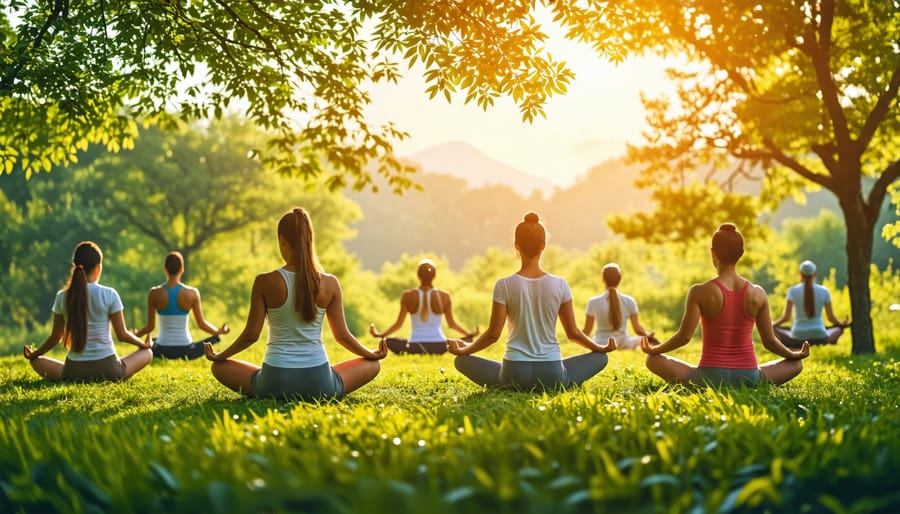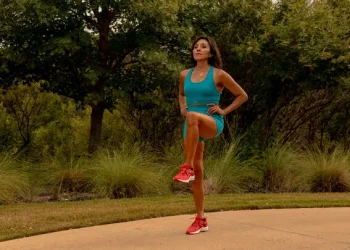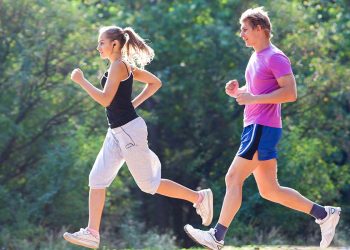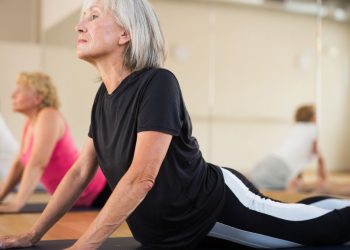In a world that often glorifies high-intensity workouts and pushing physical limits, gentle movement practices offer a refreshing alternative one that honors the body’s wisdom, promotes sustainable wellness, and cultivates a deeper mind-body connection. These practices recognize that movement doesn’t need to be aggressive or exhausting to be transformative. Instead, they invite us to explore motion with awareness, curiosity, and compassion.
Understanding Gentle Movement
Gentle movement encompasses a diverse range of practices that emphasize controlled, mindful motion over speed or intensity. These modalities prioritize proper alignment, breath awareness, and internal sensation rather than external achievement. Unlike conventional exercise programs that often focus on burning calories or building muscle mass, gentle movement practices aim to restore natural function, release tension, improve body awareness, and promote overall well-being.
The philosophy underlying these practices is both ancient and increasingly relevant to modern life. They acknowledge that the body is not a machine to be driven hard, but a complex, intelligent system that responds best to patient, attentive care. This approach makes gentle movement accessible to virtually everyone, regardless of age, fitness level, or physical limitations.
Exploring Gentle Movement Modalities
Yoga
Perhaps the most widely recognized gentle movement practice, yoga combines physical postures (asanas), breathing techniques (pranayama), and meditation. While some yoga styles can be vigorous, gentler forms like Hatha, Yin, Restorative, and Gentle Yoga emphasize slow, sustained stretches and mindful transitions.
Yoga cultivates flexibility, balance, and strength while encouraging practitioners to listen to their bodies and respect their limits. The practice’s emphasis on breath work helps calm the nervous system, making it particularly beneficial for stress management. Each posture becomes an opportunity to observe sensation, notice thought patterns, and practice presence.
Tai Chi
Often described as “meditation in motion,” Tai Chi is an ancient Chinese martial art characterized by slow, flowing movements performed in a continuous sequence. Practitioners move through choreographed forms with focused attention, shifting weight smoothly from one leg to another while maintaining soft, relaxed muscles.
The deliberate pace of Tai Chi allows practitioners to refine their balance, coordination, and body awareness. Research has shown it to be particularly effective for improving stability in older adults, reducing fall risk, and managing chronic pain conditions. The meditative quality of the practice also promotes mental clarity and emotional equilibrium.
Qigong
Closely related to Tai Chi, Qigong (pronounced “chee-gong”) is another Chinese practice that combines gentle movements, breathing techniques, and focused intention to cultivate and balance life energy, or “qi.” Qigong exercises can be performed standing, sitting, or lying down, making them accessible to people with various physical abilities.
The practice includes both dynamic movements and static postures, often with visualization or meditation components. Qigong is known for its therapeutic applications and is used to support recovery from illness, reduce stress, and enhance overall vitality. Its gentle nature makes it an excellent choice for those dealing with chronic conditions or recovering from injury.
Pilates
Developed by Joseph Pilates in the early 20th century, Pilates focuses on core strength, proper alignment, and controlled movement. While some Pilates classes can be quite challenging, mat-based Pilates and gentle reformer classes offer low-impact options that build strength gradually and mindfully.
Pilates emphasizes quality over quantity, with attention to precise form and breathing patterns. The practice strengthens deep stabilizing muscles, improves posture, and enhances body awareness. It’s particularly beneficial for people recovering from injuries or those seeking to address muscular imbalances and chronic pain patterns.
Feldenkrais Method
The Feldenkrais Method is a somatic educational approach that uses gentle movement and directed attention to improve movement patterns and enhance self-awareness. Through two main formats Awareness Through Movement (group classes) and Functional Integration (one-on-one sessions) practitioners explore small, easy movements that challenge habitual patterns.
This method is especially valuable for people with chronic pain, neurological conditions, or movement restrictions. By working with the nervous system rather than forcing muscles to stretch or strengthen, Feldenkrais can create profound changes in how people move and feel in their bodies.
Alexander Technique
The Alexander Technique teaches people to recognize and release unnecessary tension and improve coordination in everyday activities. Rather than prescribing specific exercises, this practice helps individuals become aware of harmful habits and learn to move with greater ease and efficiency.
Originally developed for performers, the Alexander Technique has broad applications for anyone seeking to reduce chronic tension, improve posture, or manage pain. Lessons typically involve gentle guidance from a teacher who uses hands-on touch and verbal cues to help students experience more balanced, easeful movement.
Gentle Swimming and Water-Based Movement
Water provides natural resistance while supporting the body, making aquatic activities ideal for gentle movement. Water walking, gentle swimming, and aqua therapy allow for fluid, three-dimensional movement without the impact of land-based activities. The buoyancy of water reduces stress on joints while the resistance provides strengthening benefits.
Restorative and Yin Yoga
These deeply restful yoga styles involve holding passive poses for extended periods, typically three to twenty minutes. Props like bolsters, blankets, and blocks support the body, allowing complete relaxation. These practices target the connective tissues rather than muscles, promoting flexibility while calming the nervous system. They’re particularly beneficial for stress relief, improving sleep, and counterbalancing more active lifestyles.
The Multifaceted Benefits of Gentle Movement
Physical Benefits
Gentle movement practices offer numerous physical advantages without the wear and tear associated with high-impact activities. They improve flexibility and range of motion, often more effectively than static stretching alone. The mindful approach helps prevent injury by encouraging practitioners to respect their body’s signals and work within appropriate limits.
These practices enhance balance and coordination, particularly important for older adults or anyone concerned about fall prevention. They also build functional strength—the kind needed for daily activities while improving posture and alignment. Many people find relief from chronic pain conditions, as gentle movement helps release muscular tension, improve circulation, and restore natural movement patterns.
Mental and Cognitive Benefits
The contemplative nature of gentle movement practices makes them powerful tools for mental health. The combination of physical movement and focused attention activates the parasympathetic nervous system, triggering the body’s relaxation response. This helps reduce anxiety, manage stress, and promote emotional regulation.
Research has shown that practices like Tai Chi and yoga can improve cognitive function, including memory, attention, and processing speed. The mindfulness component enhances body awareness and present-moment focus, skills that extend beyond the practice session into daily life. Many practitioners report improved sleep quality, greater mental clarity, and enhanced overall mood.
Emotional and Spiritual Benefits
Beyond physical and mental advantages, gentle movement practices can facilitate emotional processing and release. The safe, controlled environment allows emotions stored in the body to surface and dissipate. Many people experience a greater sense of connection to their bodies, to their breath, to the present moment, and sometimes to something larger than themselves.
These practices can foster self-compassion and acceptance, as they emphasize working with the body rather than against it. The non-competitive nature removes pressure to perform or achieve, creating space for genuine self-exploration and growth.
Choosing the Right Practice for Your Needs
Assess Your Current Situation
Begin by honestly evaluating your current physical condition, limitations, and goals. Are you managing an injury or chronic condition? Are you seeking stress relief, improved flexibility, or greater body awareness? Understanding your starting point helps narrow down appropriate options.
Consider your energy levels and schedule. Some practices require more mental focus and engagement, while others emphasize relaxation and restoration. Choose based on what you need most energizing movement, calming practice, or something in between.
Try Multiple Approaches
Most gentle movement modalities require time and consistent practice to reveal their benefits. However, you’ll likely have an intuitive sense of whether something resonates with you after a few sessions. Sample different practices through introductory classes, online videos, or community offerings.
Pay attention to how you feel both during and after practice. Do you experience a sense of ease and well-being, or does something feel forced or uncomfortable? Your body’s feedback is valuable information in finding the right fit.
Consider Accessibility and Resources
Evaluate practical factors like availability of qualified teachers in your area, cost, and scheduling. Some practices like yoga have widespread availability, while others like Feldenkrais or Alexander Technique may require more searching. Many gentle movement practices can be learned through online platforms, though in-person instruction often provides valuable feedback, especially for beginners.
Consider starting with practices that require minimal equipment or can be adapted to your living space. Yoga, Qigong, and basic Pilates can all be practiced at home with little or no equipment.
Match Practice to Personality
Your temperament and preferences matter. Do you prefer structure and clear instruction, or more exploratory, open-ended approaches? Some people thrive with the precise alignment cues of Pilates or Iyengar yoga, while others prefer the flowing, intuitive nature of Tai Chi or dance-based gentle movement.
If you enjoy variety, yoga might appeal with its many styles and options. If you appreciate tradition and ceremonial aspects, Tai Chi or traditional yoga lineages might resonate. For those drawn to scientific, evidence-based approaches, Pilates or Feldenkrais may feel more comfortable.
Getting Started with Gentle Movement
Start Where You Are
The beauty of gentle movement is that there’s no prerequisite of fitness or flexibility. Begin with the simplest variations and progress gradually. Even five to ten minutes of daily practice can yield benefits, making consistency more achievable than attempting lengthy sessions sporadically.
Find Qualified Instruction
Especially when beginning, working with experienced teachers ensures you learn proper techniques and avoid developing unhelpful habits. Look for instructors who emphasize safety, encourage modifications, and create a welcoming, non-judgmental environment. Many teachers offer beginner-specific classes or private sessions for those who prefer individualized attention.
Cultivate Patience and Curiosity
Gentle movement practices unfold their gifts over time. Approach your practice with curiosity rather than judgment, viewing each session as an opportunity to learn about yourself. Release expectations of immediate dramatic results, trusting that subtle changes accumulate into significant transformation.
Listen to Your Body
Perhaps the most important guideline is to develop the skill of listening to your body’s signals. Gentle movement should never cause sharp pain or feel harmful. Learn to distinguish between the sensation of muscles working or stretching (which can be intense but not painful) and signals that you’re pushing too far. This discernment is itself a valuable outcome of practice.
Conclusion
Gentle movement practices offer a sustainable, accessible path to physical health, mental clarity, and emotional well-being. By honoring the body’s intelligence and capacity for natural healing, these modalities provide an antidote to the aggressive, no-pain-no-gain mentality that often leads to burnout and injury.
Whether you’re drawn to the flowing movements of Tai Chi, the strengthening precision of Pilates, the contemplative poses of yoga, or the exploratory nature of somatic practices, there’s a gentle movement modality suited to your needs and preferences. The journey begins with a single mindful movement, an intention to treat your body with respect and curiosity.
In choosing gentle movement, you’re not opting for something easier or less effective you’re choosing a more intelligent, sustainable approach to wellness that can support you throughout your lifetime. As you develop your practice, you may find that the benefits extend far beyond physical fitness, touching every aspect of your life with greater awareness, ease, and vitality.





